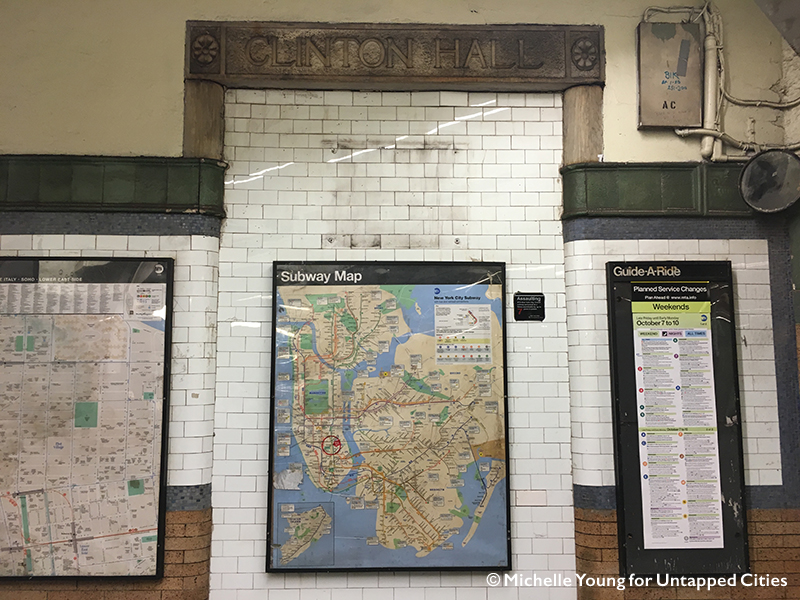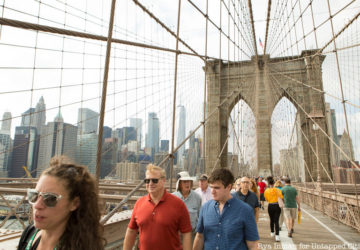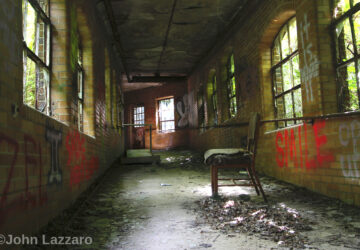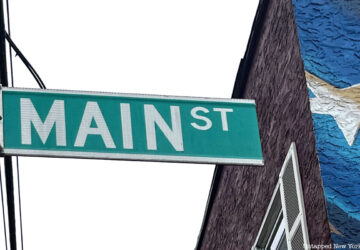17. The Boarded Up Entrance to Clinton Hall

The New York City subway connects directly to many buildings around New York City and throughout the system you can find remnants of exits, entrances and tunnels that are no longer in use. Once such example can be found in the Astor Place subway station in Manhattan, one of the original 28 subway stations in New York City. Near the turnstiles on the downtown platform of the 6 train you will find what looks like a bricked-in doorway, and that is exactly what it is. The doorway once led to a corridor that connected the subway station to Clinton Hall, a building that is still standing at the triangle of Astor Place on East 8th Street and Lafayette Street.
Clinton Hall housed the Mercantile Library of New York from 1855 to 1932. The library held more than 120,000 volumes, boasted a membership of 12,000 people, and hosted lectures by notable figures such as Ralph Waldo Emerson and Mark Twain. It was such an important and highly regarding institution that it was deemed worthy of its own subway entrance when the nearby station was constructed in 1904. Before the library, Clinton Hall, the Astor Place Opera House stood at the site. After the library relocated in 1932 and in the mid-1990s Clinton Hall was turned into an apartment building.
Other now defunct corridors between mass New York City’s mass transit hubs and buildings include the Knickerbocker Hotel entrance at Times Square/42nd Street, doors to the City Hall R station in the basement of the Woolworth Building, the closed-up tunnel which once connected Penn Station to The New Yorker Hotel.Though not close off, there are also multiple tunnels in Grand Central terminal that led out from the station to other buildings. The most storied of these passageways Track 61, the secret track once used by FDR to travel incognito from Grand Central to the Waldrof Astoria. There is also a Guastavino tiled tunnel, now part of a parking garage, that led from Grand Central to the lost Biltmore Hotel.





